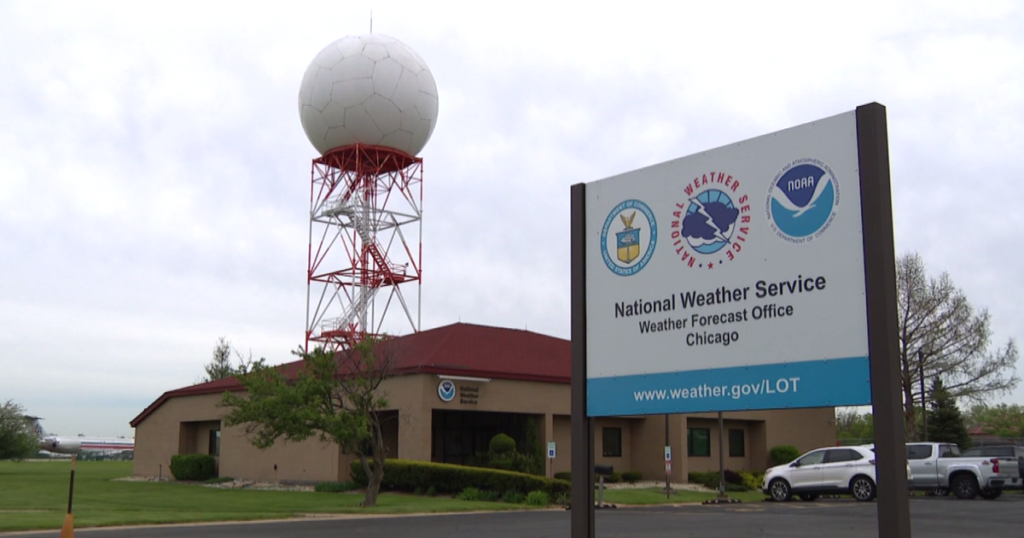At Sustainable Action Now, we work every day to confront the climate emergency, dismantle environmental injustice, and build a sustainable future grounded in transparency and community resilience. That’s why we are deeply concerned—and frankly, outraged—by recent revelations that the National Weather Service (NWS) is racing to fill critical vacancies just as the 2025 hurricane season looms.
Internal documents reviewed by POLITICO expose a troubling trend: dozens of key roles within the NWS remain unfilled, from meteorologist-in-charge positions in storm-prone regions like Lake Charles, Louisiana, to high-level forecasting roles in places like Fairbanks, Alaska. As climate impacts escalate, the very agency responsible for keeping us safe is struggling to keep its own systems staffed.
This isn’t just a staffing problem. It’s a climate vulnerability—and it puts lives, ecosystems, and entire communities at risk.
Explore our coverage of the climate crisis and its far-reaching impacts in our climate action archive.
Understaffed and Underprepared: A Dangerous Equation in a Warming World
Every year, the Atlantic hurricane season grows more intense and more unpredictable—fueled by warmer oceans, rising temperatures, and the undeniable impacts of global climate change. We’ve already seen storms that used to be considered “once-in-a-century” events become disturbingly regular. Now imagine facing these storms without the fully staffed federal infrastructure that’s supposed to predict them.
The National Weather Service is the first line of defense when it comes to issuing early warnings, modeling storm behavior, and coordinating emergency responses. When meteorologist positions go unfilled, critical data might not be analyzed in time. Forecasts might lack the precision needed to guide evacuations. Entire regions may be forced to navigate high-risk weather events without the benefit of timely, science-based information.
The reality is simple:
No climate resilience without robust public institutions.
Why This Should Matter to You—No Matter Where You Live
While Fairbanks and Lake Charles may feel like distant names on a map, the consequences of an overstretched and under-resourced NWS ripple far beyond their borders. A tornado in Oklahoma, a flash flood in New York, or a wildfire in California—every weather disaster now carries the imprint of climate change. And every one of them relies on accurate forecasts and rapid response.
This is a national issue with local consequences. If you’re living in a coastal community, an urban heat island, or a flood-prone region, your safety is directly tied to how well-staffed and equipped our national weather services are.
The Bigger Picture: A System Failing to Adapt
This situation is emblematic of a larger pattern: as the climate crisis intensifies, our systems remain stuck in reactive mode. From outdated infrastructure to underfunded agencies, we are not investing fast enough in the protections we need. And while corporate polluters rake in record profits, public institutions like the NWS are left to do more with less.
This isn’t just bad planning—it’s environmental injustice. Vulnerable communities, particularly low-income and BIPOC populations, bear the brunt of extreme weather and suffer most when public systems fail. When warnings are delayed or inaccurate, these communities often have the fewest resources to adapt or escape.
What Needs to Happen Now
The staffing crisis at the National Weather Service must be treated as a national emergency. At Sustainable Action Now, we’re calling for:
- Immediate federal investment in staffing and modernizing the NWS
- Climate-forward recruitment and training pipelines for public sector science roles
- Transparent public oversight of agencies tasked with disaster response
- Equitable climate adaptation planning in every city and state
And just as importantly, we’re calling on everyday people—like you—to demand better from our elected officials. Climate denial and budget cuts aren’t just bad policy—they’re dangerous.
What You Can Do
Want to take action today? Here’s where to start:
✅ Stay informed about the real risks of climate change and how systemic underinvestment worsens them.
✅ Support organizations advocating for climate resilience, justice, and public sector funding—like Sustainable Action Now.
✅ Contact your representatives and demand full staffing and funding for the National Weather Service.
✅ Share this story and raise awareness—because silence enables systemic failure.
👉 For more in-depth coverage and climate policy analysis, visit our climate report hub.
We Deserve Better—And We Must Demand It
Climate change is no longer a distant threat—it’s happening now, in real time. And our ability to respond, adapt, and protect the most vulnerable depends on well-funded, well-staffed public systems. The current staffing shortage at the NWS is not just a bureaucratic hiccup—it’s a warning siren.
Let’s not wait for another disaster to take it seriously. Let’s act now—for science, for safety, for sustainability.
Sustainable Action Now. For People. For Planet. For Justice.
#ClimateJustice #NationalWeatherService #HurricaneSeason #ExtremeWeather #PublicSafety #ClimateAdaptation #SustainableActionNow


